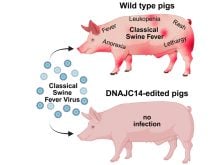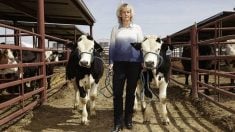Wheat growers across the northern half of the Prairies are having serious problems with ergot, which threatens to seriously downgrade many excellent crops.
But the Canadian Grain Commission is telling producers to challenge elevator agents who downgrade their wheat because they may not be properly applying new ergot tests.
“We have received reports which lead us to suspect some deliveries have been misgraded,” said CGC chief grain inspector Len Seguin.
Ergot is always present in the prairie crop, but is not usually a widespread problem. This year it is a problem across the prairie parkland, from western Manitoba to Alberta.
Read Also

Organic farmers urged to make better use of trade deals
Organic growers should be singing CUSMA’s praises, according to the Canadian Chamber of Commerce.
“Just about every producer has it,” said Tisdale, Sask., provincial agrologist Leroy Bader. “It’s pretty widespread.”
Toxic to livestock
Ergot is a purple fungus that invades wheat and replaces kernels with a sclerotium, or ergot body. Apart from being unsightly, ergot is also toxic for livestock, so heavily infected crops cannot be sold for feed. It does not poison humans, but high levels cause the wheat to be downgraded.
Bader said producers are worried their wheat will be downgraded, which takes little ergot infection. To be graded number one, wheat must have less than 0.01 percent ergot infection by weight.
One of the worst aspects for farmers, Bader said, is that ergot is especially prevalent in the best quality wheat.
“It’s mostly in number one high protein wheat,” said Bader. “It’s a bad problem, because other than those ergot bodies, it’s great wheat.”
It isn’t easy to clean out. Gravity tables work, but they’re slow and there aren’t many available, Bader said.
The grain commission is concerned because ergot tests have just changed. Elevator agents used to count the number of ergot pieces in a 500 gram sample. This was a problem because pieces vary wildly in size. The new tests estimate the weight of ergot in a sample. This is the method that has been used for many years at terminal elevators and is considered much better.
But country elevator staff must ensure they clean samples before trying to measure ergot content, because most large ergot pieces can be easily cleaned out and left as dockage.
“If the dockage is not removed from a sample, the amount of ergot can be exaggerated,” said Seguin.
If a producer does not want to accept an elevator agent’s ruling on ergot content, he can request a grade by the CGC.
Bader said the worst infected crops in his area appear to be the earliest seeded ones. Producers are hopeful that their later crops will have less ergot and that elevators will be able to blend so that downgrading can be avoided.















